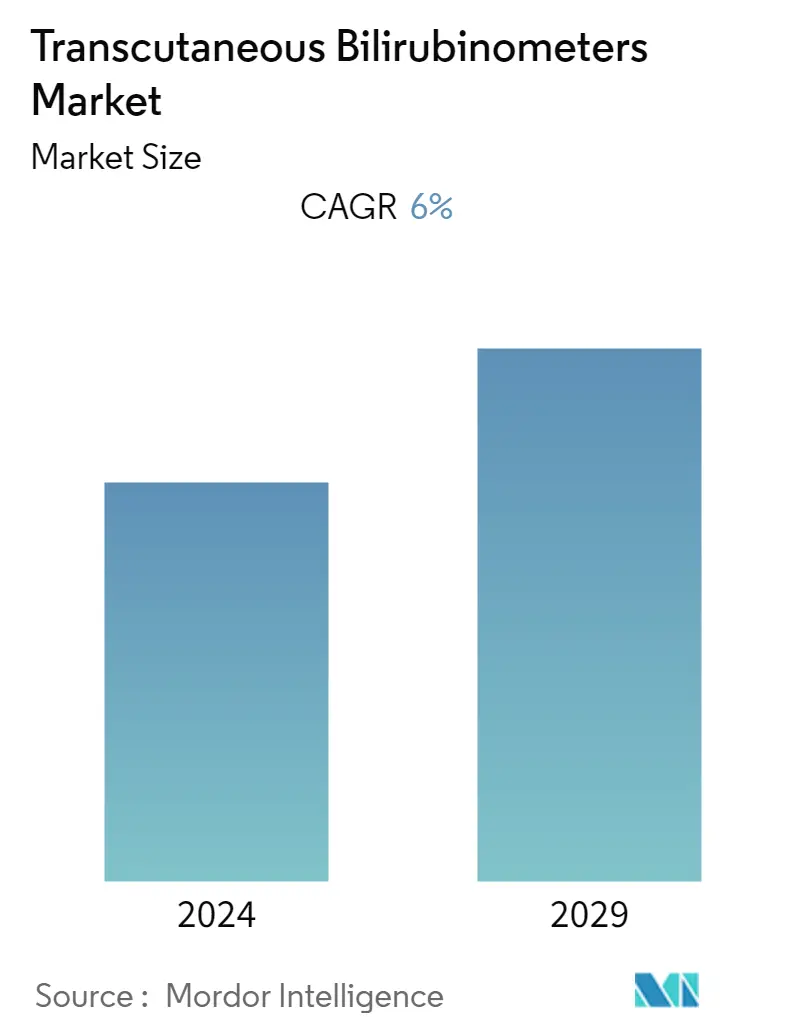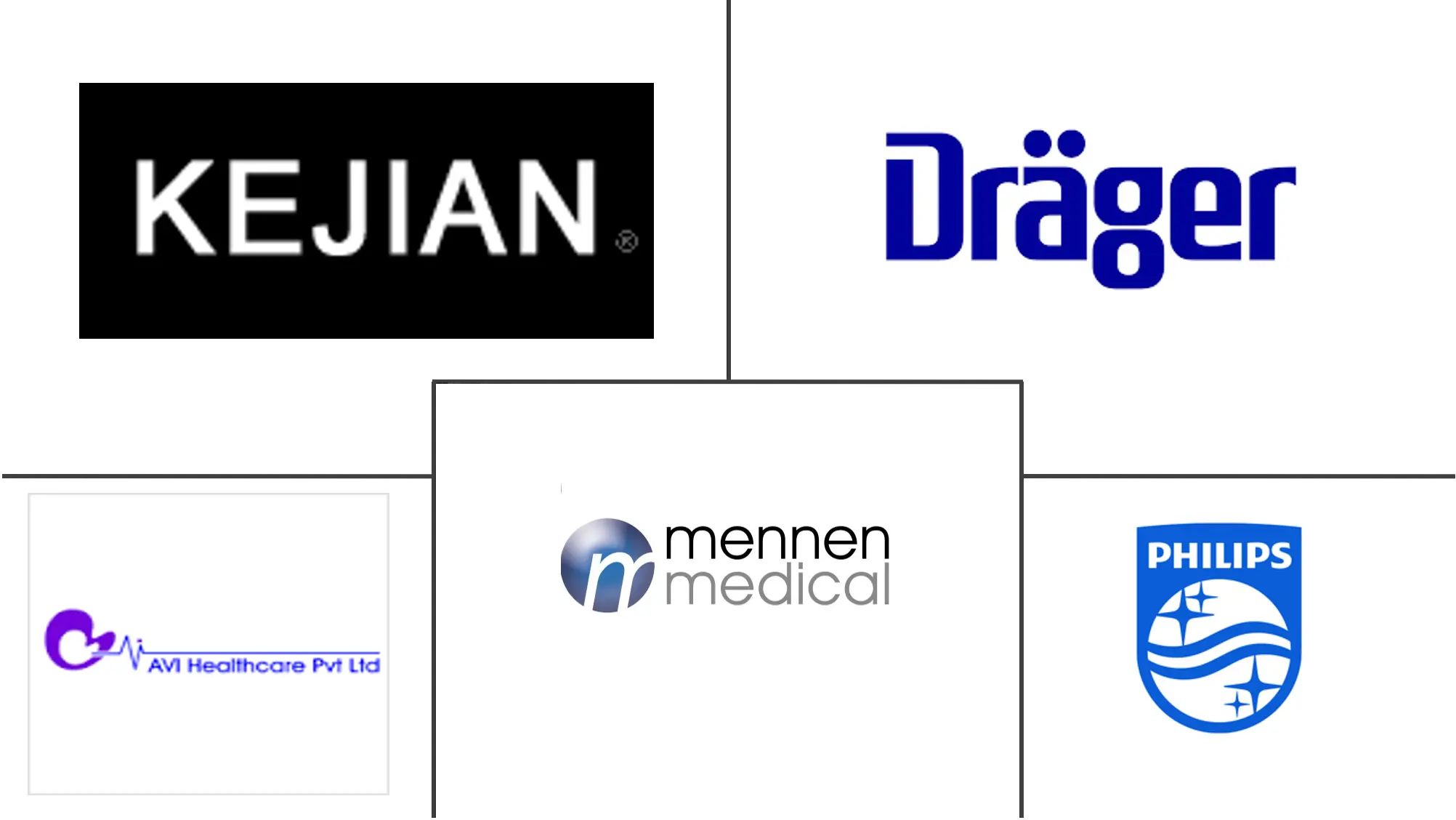Market Size of Transcutaneous Bilirubinometers Industry

| Study Period | 2021 - 2029 |
| Base Year For Estimation | 2023 |
| CAGR | 6.00 % |
| Fastest Growing Market | North America |
| Largest Market | Asia Pacific |
| Market Concentration | Low |
Major Players
*Disclaimer: Major Players sorted in no particular order |
Need a report that reflects how COVID-19 has impacted this market and its growth?
Transcutaneous Billirubinometers Market Analysis
The transcutaneous bilirubinometers market is expected to register a CAGR of 6.0% during the forecast period.
The COVID-19 pandemic had a significant impact on the market studied. Due to the emergence of COVID-19, governments of countries across the globe took measures to aid the infection globally. Since neonatal jaundice screening necessitates the presence of both parents in the hospital, the spread of infection is increased. As a result, a few countries implemented COVID-19 control measures, such as providing neonate jaundice screening services outside of hospitals and clinics. For instance, as per an article published in the Journal of Pediatrics and Child Health in January 2021, during the initial phase of the pandemic, the Malaysian Ministry of Health introduced the transcutaneous bilirubin drive-through (DT) service to reduce congestion in hospitals. This increased the demand for transcutaneous bilirubinometers. Additionally, in the later phases of the pandemic, demand for transcutaneous bilirubin tests increased, owing to an increase in jaundice cases among the neonate population. This created demand for transcutaneous bilirubinometers and significantly propelled the market growth. Thus, owing to the factors mentioned above, the pandemic impacted the market studied significantly and is expected to witness growth over the forecast period.
Factors such as the rising incidence of jaundice in neonatal patients and technological advancements greatly contribute to the studied market's growth.
Neonatal jaundice is a frequent source of concern for parents and caregivers. It can cause serious problems, including bilirubin encephalopathy if ignored. The condition is very common among neonates globally. As per the August 2022 update of the NCBI data, nearly 60% of term and 80% of preterm newborns develop clinical jaundice in the first week after birth. Additionally, as per the source above, most newborns with clinical jaundice have unconjugated hyperbilirubinemia (UHB), but conjugated hyperbilirubinemia (CHB), which is invariably abnormal and indicates an underlying medical reason, is present in some newborns with jaundice. Thus, this high risk of jaundice among neonates is creating demand for bilirubin tests. Thus, the demand for transcutaneous bilirubinometers is increasing, driving the market's growth.
Furthermore, neonatal jaundice is a temporary and physiological accumulation of bilirubin that causes the majority of neonatal jaundice, which is a common condition among newborn babies. Neonatal hyperbilirubinemia may become extreme in a small percentage of infants, which could ultimately result in brain damage.
In addition, despite being a condition that can be avoided, there have been some reports of an increase in the incidence of debilitating newborn hyperbilirubinemia. Thus, guidelines have been issued for the screening and management of neonatal hyperbilirubinemia, and the demand for transcutaneous bilirubin tests has increased. According to an article published in the Springer Nature journal in April 2022, non-invasive, transcutaneous bilirubin screenings have become widely used as first-line screening tools in high-resource settings to avoid uncomfortable blood sampling and obtain a speedy result at the bedside. Thus, with an increased risk of jaundice among neonates, the demand for transcutaneous bilirubinometers is increasing. This is further driving the studied market's growth.
Therefore, the factors mentioned above, such as the rise in neonatal jaundice cases, are predicted to contribute to the growth of the studied market over the forecast period. However, the high cost of tests is expected to hamper the market growth.
